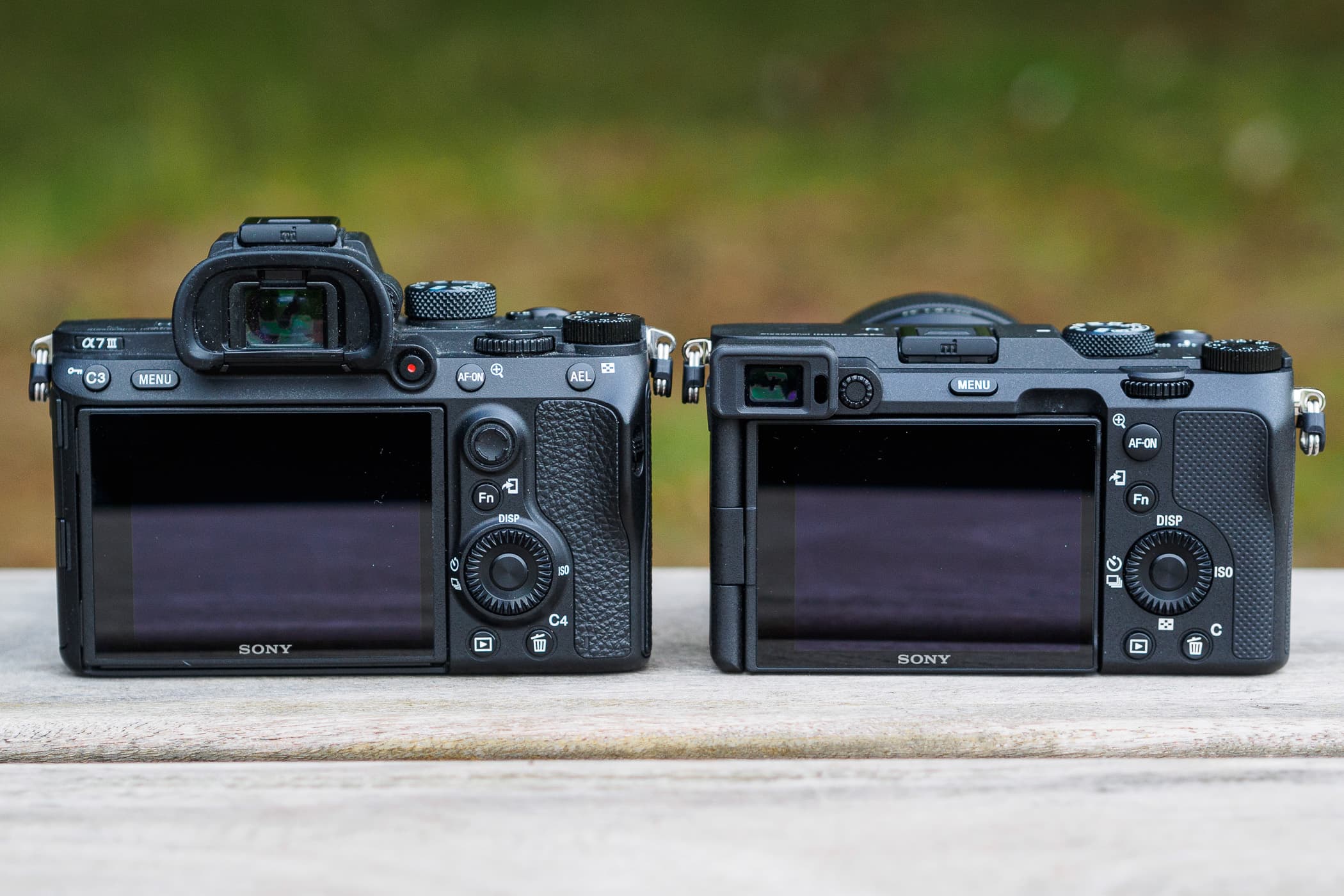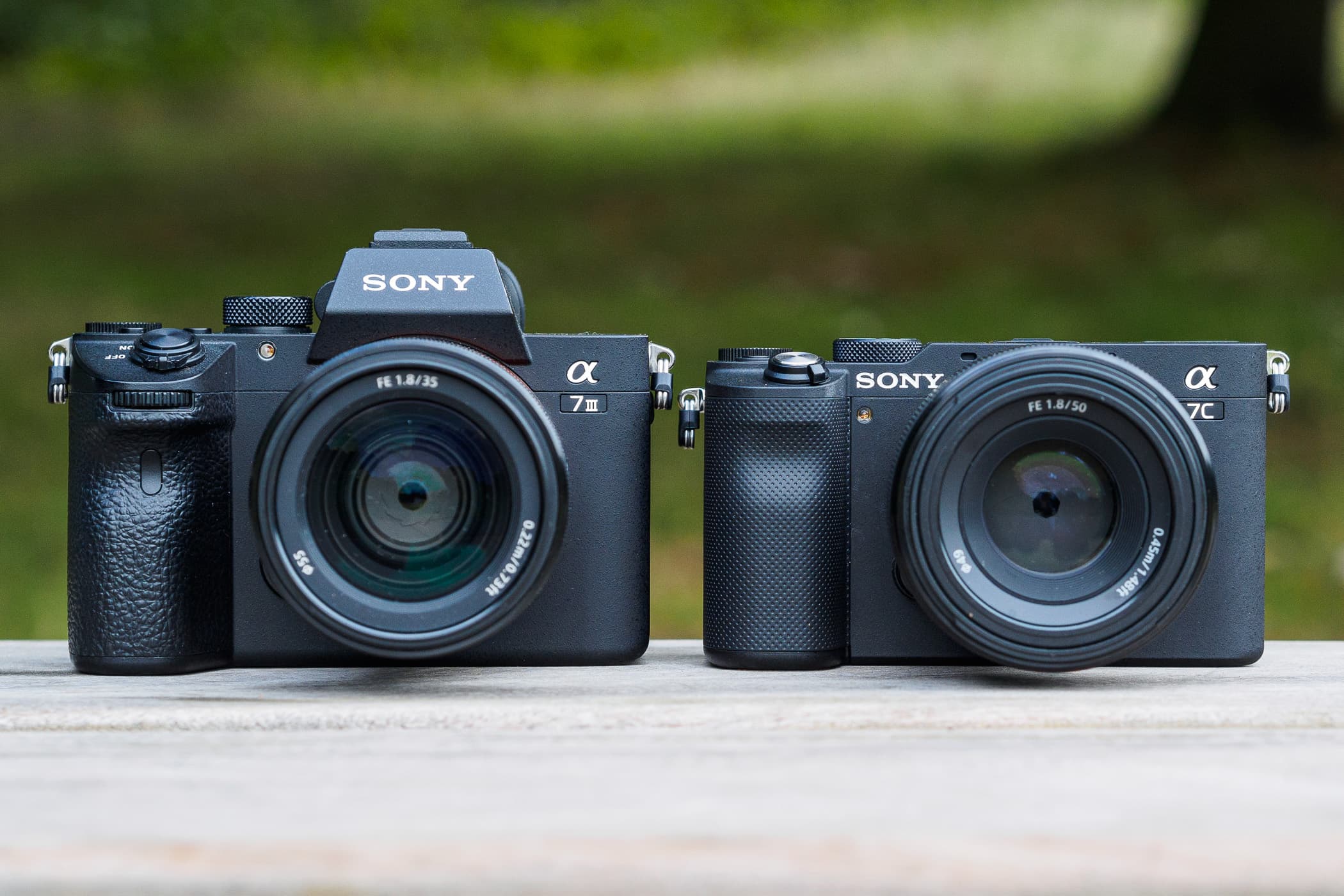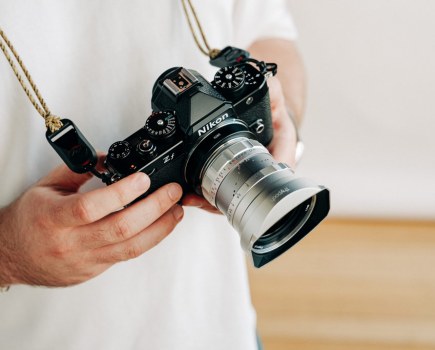Sony has just introduced the compact-bodied Alpha 7C full-frame mirrorless camera. It shares a great many of its specifications with the excellent Alpha 7 III, which employs a larger, SLR-shaped design. So how do these two cameras compare, and which might be the better choice for you?
Read our Sony Alpha 7C Hands-on First Look
First let’s take a look at what they’ve got in common. Both cameras employ the same 24-million-pixel full-frame CMOS sensor, which offers ISO 100-51,200 as standard, and ISO 50-204,800 extended. Both can shoot at 10 frames per second and use the same hybrid autofocus system, with 693 phase detection points complemented by 425 contrast detection points. One difference lies in the shutter – the Alpha 7C only achieves 1/4000sec in mechanical mode, but can match the A7 III’s top speed of of 1/8000sec if you switch it to the silent mode, which uses an electronic shutter. Ultimately, either camera should be able to do pretty much anything you might ask of it.
In reality, the most significant differences between the two cameras come down to their designs, with Sony making a number of compromises to squeeze everything in to the Alpha 7C’s smaller body. Unsurprisingly, its viewfinder is much smaller, at 0.59x magnification compared to the A7 III’s 0.78x, although both share the same 2.36m-dot resolution.
Another key difference lies with the screens. Both cameras use a 3in, 921k-dot touchscreen, but where the A7 III’s can only tilt up and down, the A7C’s fully-articulated version can be set to face in almost any direction, including forwards for selfies or vlogging. It’s also much more useful when the camera is turned to portrait format.
Looking at the rear of the two cameras reinforces just how small the A7C’s viewfinder is. This comparison also highlights the fact that the A7 III has a more comprehensive set of controls, including a joystick selector for repositioning the AF area, and several more customisable buttons. But on the A7C the AF point can be displayed in red, whereas on the A7 III Sony stubbornly still only gives the option of grey, which is often invisible in real-world shooting.
Most advantages, however, go the A7 III’s way. It has dual card slots, rather then just one, which allows you to record back-up copies of your images during important shoots. The A7 III also has an infrared remote control receiver on the handgrip, and a microUSB port that can accept a wired remote release. If you wish to control the A7C remotely, you’ll need to use your smartphone, via Bluetooth or Wi-Fi.
A comparison of the cameras’ top plates reveals just how much larger the A7 III’s grip is compared to the A7C’s. While personal preference always comes into play here, the A7 III gives a more secure hold, and is more comfortable to use with larger, heavier lenses. The A7C also does without a front control dial, meaning that all of the settings have to be changed using your thumb. However the A7C boasts a more convenient top-mounted movie button.
From this comparison so far, it might seem that there are few reasons to recommend the A7C. But of course its whole raison d’être is its compact size, which is illustrated well by the front-on view below. Teamed with a set of small lenses, it promises to be a fine option for travel, while its unobtrusive profile may well make it attractive to street photographers.
The larger and more complex A7 III will remain in Sony’s range for those photographers who would like to have more external controls, or are likely to use larger lenses. So the A7C can’t really be criticised for not being an A7 III – it just offers a different choice.
Sony A7 III vs A7C: which should I buy?
In this article, I’ve aimed to give an idea of the main differences between the two cameras, rather than a line-by-line comparison of specifications. The Alpha 7C’s biggest strength lies in its small size, while its simplified design is supposed to appeal to less-advanced photographers than the Alpha 7 III.

For most enthusiast shooters looking for a superb all-rounder that works well with a large range of lenses, the A7III is likely to remain the better choice. But if you prefer the flat body design and the extra flexibility provided by the fully articulated screen, the A7C is set to be just as accomplished a performer.











